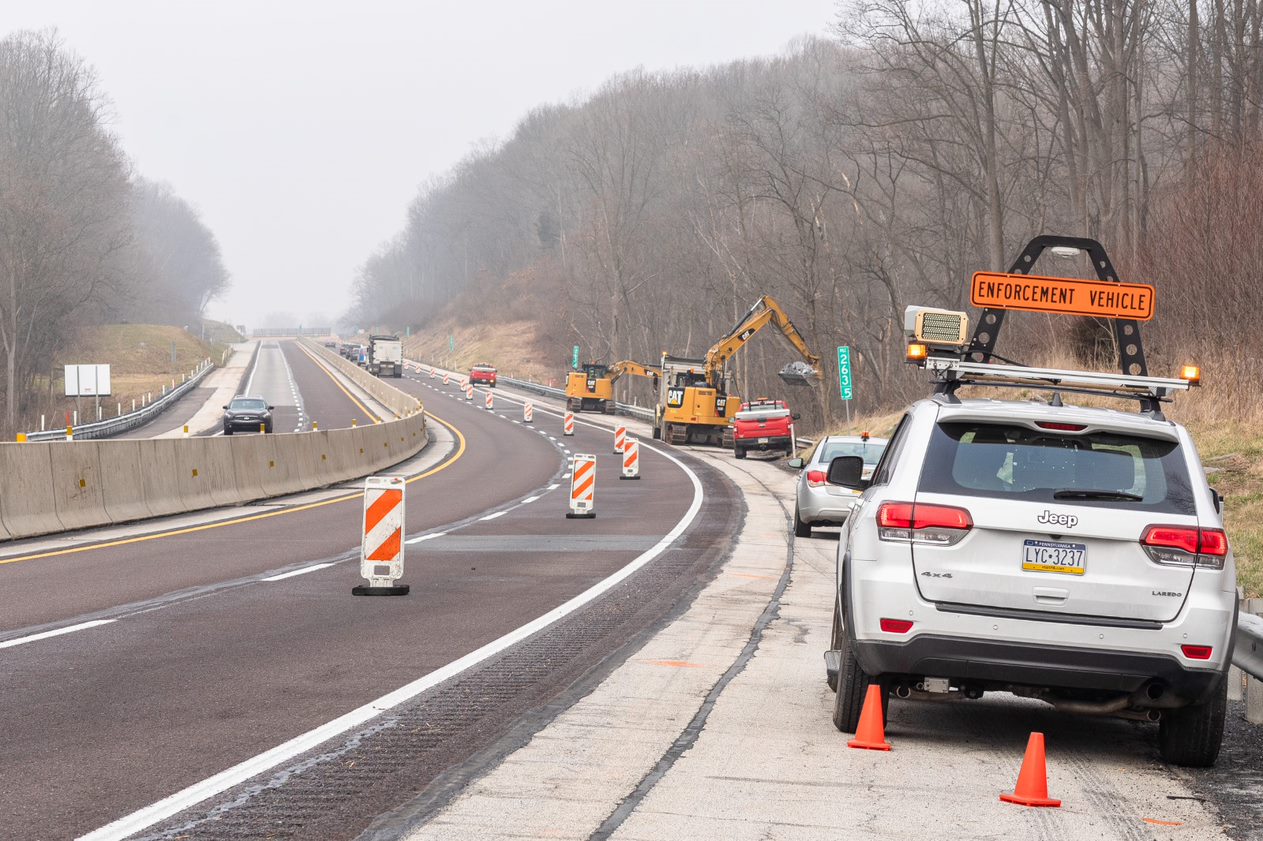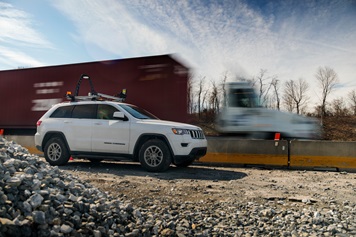
Automated Work-Zone Speed Enforcement Has Reduced Speeding, Crashes
In just four construction seasons, a pilot project has reduced the number of crashes and the amount of speeding in work zones, and Turnpike officials are hoping legislation will be passed soon to make this work-zone safety program permanent.
“It has absolutely been a success,” PA Turnpike Senior Engineer Project Manager Chad Smith said.
“In Traffic Engineering and Operations, we’re always looking for ways to improve safety for our workers and customers, and AWZSE is an effective tool in achieving that goal.”
AWZSE is short for Automated Work Zone Speed Enforcement, a program using speed-enforcement cameras mounted on vehicles like this one, which take photos of passing vehicles and register their speeds. Anyone driving 11 mph or more over the speed limit gets a violation notice in the mail.
Using both a tracking and a point-radar system, the radar follow each vehicle as it approaches and also measures the point speed as it passes the enforcement vehicle. Smith explained the two-radar systems cross-check, and if the speed registered on the two systems doesn’t match, the event is canceled. If it matches, the violation goes through a review period before it’s issued. The first violation is a warning. The second is a $75 fine, and the third and each subsequent penalty is $150.

Drivers have plenty of warning as they’re approaching one of these mobile units stationed in work zones, though. There are signs generally 1,000 feet and 500 feet ahead of the cameras, and the enforcement vehicles themselves are pretty obvious.
“We’re not trying to hide anything,” Smith said. “Traffic is slowing down, and people are aware of the program and are going through work zones in a safer manner.”
So far, the program has reduced the number of speeders driving between 1 and 10 mph over the speed limit by 38%. More impressively, excessive speeding – meaning 11 mph or more above the speed limit – has been reduced by 47%.
It’s not just work-zone speeding that has been reduced on the Turnpike thanks to these cameras. When AWZSE are deployed, work zone crashes are reduced anywhere between 15 and 50% on the projects that crash data was analyzed.
There are 17 AWZSE units in use around the state that the Turnpike shares with PennDOT. They have been deployed about 10,000 times across the state – roughly 4,000 of which were on the Turnpike – and more than 1 million violations have been issued with over half of the violations occurring on the Turnpike.
Smith said the feedback from the Turnpike’s Maintenance workers, contractors, construction staff, and the PA State Police has overwhelmingly been positive.
“Those guys feel safer, they say it feels like it makes drivers more alert, they’re slowing down and making a safer environment for them to do their jobs every day,” he said.
The pilot program ends in February, but it’s been such a success, Smith expects the state legislature will continue it. The PA Turnpike Commission seems to be expecting it too, having approved a contract to use the cameras for another year.
“When our customers get a violation, I’m sure they’re not happy about it, but they realize the reason behind the program,” Smith said. “We’re out to make our work zones safer so our workers can go home at the end of the day.”

